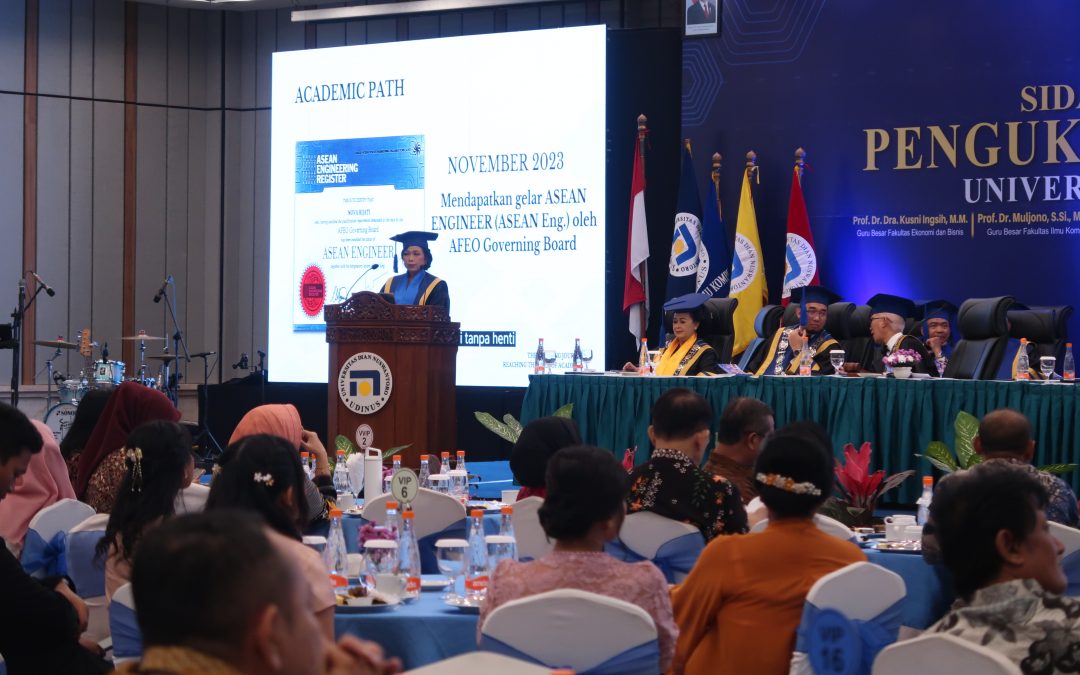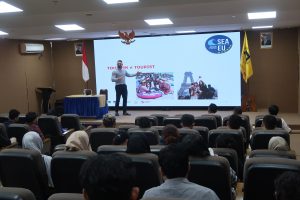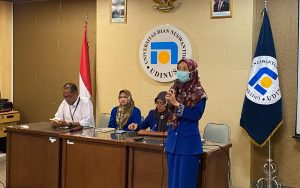A professor in Image Security at Universitas Dian Nuswantoro (Udinus), Prof. Dr. Ir. Nova Rijati, S.Si., IPU., ASEAN Eng., took a deep dive into the development of the Fragile Watermarking technology. The technology serves as an innovative solution to authenticate and fix digital pictures with high resolution, as well as mitigating cybercrimes.
The concept of Fragile Watermarking was presented by Prof. Nove in her oration during the inauguration of five professors at Udinus weeks ago. The research conducted by Prof. Nova highlights the importance of authentication and digital picture fixing in the complex digital era. According to her, in the modern era, digital pictures are among many vital elements in our daily lives, for personal needs, commercial, and security purposes.
“However, it is important to note that this element also caused the emergence of new cyber-crime threats, including image manipulation, the spread of visual hoaxes, and digital document violations,” she highlighted.
Through this research, it has been recorded that the rates of cybercrimes in Indonesia had risen by sixfold during the first half of 2024. However, it does not stop there, as during the second half of 2024, the cybercrimes rose 70%, with the majority of them committed in Indonesia.
“The recorded data suggest that Jakarta, or the capital, is the region with the highest cybercrime rates, with a total percentage of 95.3%,” she uttered.
In an attempt to address the prominence of cybercrimes, Prof. Nova’s research emphasized the importance of implementing authentication in digital pictures. She revealed that authentication serves as a primary foundation to ensure the authenticity of data or information and that it is free from manipulation.
“This authentication is important in the context of law, media, and forensics. In these three sectors, digital images are necessary as evidence or source of information,” Prof. Nova enlightened.
Meanwhile, fragile watermarking technology is used to detect any manipulations within a digital image. This technology is also used to fix pictures to their former condition with high accuracy.
“This technology is very relevant to protect the picture’s originality from any unwanted manipulations, which often threaten the integrity of information,” she uttered.
Prof. Nova also explained in detail the way fragile watermarking works. It works by spreading watermarks on a digital picture without compromising the original picture’s quality. The watermark is very sensitive toward editing or picture manipulations, allowing any form of manipulation to be detected easily.
“There is also the double-watermarking system in case one of the watermarks is severely damaged due to manipulations. This will allow the fixing process of the image to be precise and accurate,” she explained.
To conclude her oration, Prof. Nova emphasized the importance of collaboration between the government and the National Cyber and Password Agency in facing cyber threats. The National Cyber and Password Agency is expected to reinforce digital security in Indonesia further by implementing various measures, including fragile watermarking. This is because this technology holds the potential to be a primary part of national strategies to protect digital security among the general public.
“Hopefully, this technology can also be implemented in other parts of the globe in addition to Indonesia. With technological advancements rapidly developing, the Fragile Watermarking technology is expected to be a primary solution in protecting the originality and security of digital data,” she concluded. (Humas Udinus/Haris. Foto: Humas Udinus)







